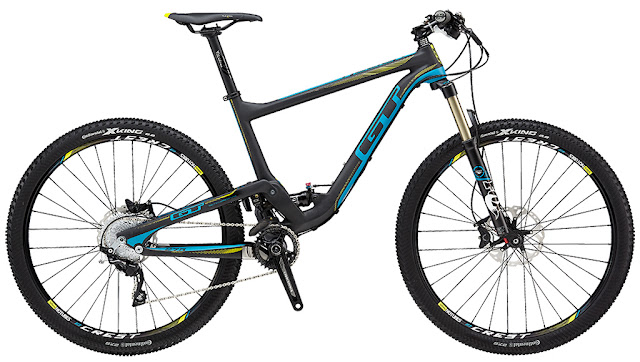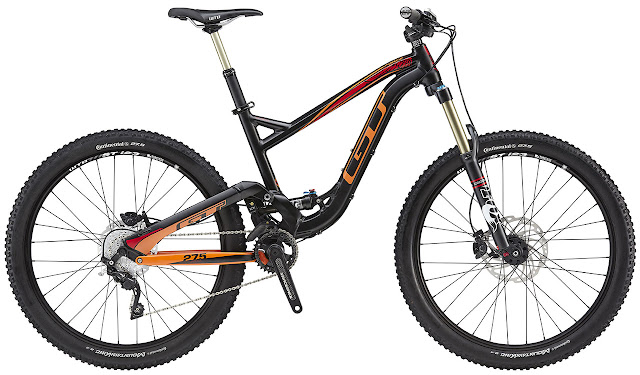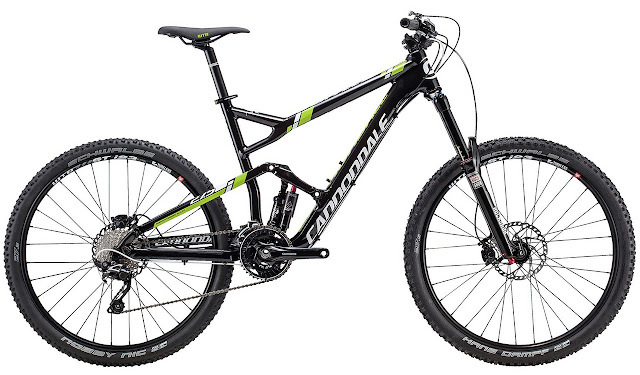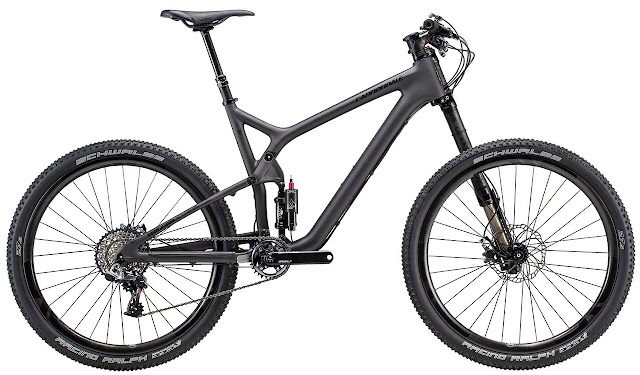There's no denying that as mountain bikers in 2015, we're spoilt for choice. Never before have we had such a selection of options across a wide range of price points and disciplines. Value for money is improving every year, and with so many brands vying for our dollar, there has never been a better time to invest in a new rig for hitting up the trails.
With all this choice, however, comes the tricky process of elimination when trying to decide what new bike should end up in your garage. How much suspension travel is too much? What wheelsize is best? Is a 1x drivetrain suitable to my local terrain? How much money should I put aside for upgrades?
Here we take you through some of the important points to consider when choosing the right bike for you
Budget
While we might not like to admit it, at the end of the day a strict budget is going to limit the type of bike we can afford. We'd all love to get a full-carbon race bike with XX-1 and ENVE wheels for $2000 but the reality is that's not going to happen! Be realistic about what you can afford, and don't feel pressured to buy the absolute top of the range just because a salesman or a magazine says the bike is the second coming of Christ. There are a lot of great bikes out there across all price points, and thanks to trickle-down technology, entry-level gear nowadays is incredibly capable. When determining your total budget, you should also consider how much you'll need to spend on any accessories or upgrades from the point of purchase. Most bikes don't come with pedals, so factor that into the price of the bike. Quality mountain bikes also require proper maintenance to ensure good performance and long-term durability, so make sure you consider ongoing service costs too.
Hardtail or Full Squish?
For the most part, your budget will determine whether you have the option of going to a full suspension bike. A decent hardtail mountain bike will set you back around $1200, while a quality full suspension bike will kick off around $2500. It's certainly possible to find cheaper options, but if you're after something that is built to last, our advice is not to compromise on quality. As the old adage goes, 'the sting of poor quality is remembered far longer than the thrill of a low price.
A hardtail will be cheaper than an equivalent full suspension bike, but it's also going to be lighter and simpler overall Particularly for riders who are getting started, a hardtail tends to have more direct handling, and it will teach you to ride smoother lines too. For those sitting at the pointy end of the field, a hardtail will also provide you with better pedaling efficiency for sprinting up the climbs. If you have your sights set on a podium position at a 6-hour Enduro or a 50km marathon race, a hardtail is the faster choice for less technical courses.
On the flip side, a full suspension bike will deliver you more comfort and more control in rough terrain. For all-day trail rides and long distance marathon racing, your lower back will welcome the additional comfort when you start pushing past the 3-hour mark. Technical climbing is also better tackled on a full suspension bike, as the rear wheel is able to maintain constant contact with the trail for improved traction. This additional grip works for the descents too, where you have a larger margin for error over a hardtail, enabling you to travel faster and with more confidence. If your budget allows it, going to a full suspension bike will get you more versatility for tackling a wider variety of trails.
Before committing to a full suspension bike though, have a think about the majority of riding you will be doing. Are you generally riding smoother purpose-built mountain bike trails? Are most of your rides 2 hours or less? Then a hardtail will be perfectly adequate for what you need, and the money you save over buying a full suspension bike can be spent on some new riding kit or an upgrade to tube less tyres.
Boy Racer or Trail Cruiser?
Another point to consider when purchasing a new bike is how serious your racing aspirations are. Although we might like to think that we're pretty quick against the clock, few of us are actually cracking the top-10 at an XCM event. Many Australian riders gravitate towards carbon hardtails and short-travel full suspension race bikes, because they're typically the lightest mountain bikes you can get. Lighter equals faster right? Well, not necessarily Of course you'll be able to fly up the hills on a tighter race bike, but if it means that you're freaking out on the descents and constantly baulking at technical sections, then you'll be far slower overall Total bike weight is only part of the equation.
For 99% of riders, mountain biking is about having fun. With that in mind, having a bike that is geared towards giving you confidence on the descents rather than all-out efficiency on the climbs is typically a good Thing. A little more suspension travel, a slightly slacker head tube angle, and some fatter tyres can go a long way to giving you more speed and stability when the trail gets rough, if at the expense of some climbing speed.
A good example would be the new GT Helion versus a Cannondale Scalpel. Both bikes sport a similar amount of travel, though the lighter Scalpel features a steeper head tube angle, stiffer suspension and a more aggressive riding position that favours hard out racing. In the hands of an expert under, the Scalpel is the better tool of choice for those watching the clock.
However, as the trail gets rougher and the rides get longer, the added stability of the Helion's longer wheelbase and its slacker head tube angle comes into its own. Of course the Helion can still be raced hard, it's just that it is a better all-round mountain bike.
How much travel is too much?
There is a balance to be achieved when it comes to suspension travel. You want enough to help you absorb hits on the trail and to provide you control when the going gets rough, but you don't want so much that it detracts from the bike's speed and ease of handling. Although modern suspension bikes are getting more effective and more efficient every year, there is such a thing as having too much travel. Once you go beyond 125mm (5") of travel, the bikes chainstay and overall wheelbase length must get longer to accommodate the extra rear wheel movement. The head angle also gets slacker again to keep the bike stable at speed However, all of this adds up to a bike that can be slower and harder to negotiate through tight single track. Think of it like trying to move a limousine through an underground carpark Not a lot of fun at all!
Thanks to the growing popularity of Gravity Enduro racing, many riders are being wooed by the allure of big-travel All Mountain bikes, such as the GT Force and the Cannondale Jekyll Whilst these bikes are superb machines for their intended purpose (blasting down technical Black Diamond trails at speed), they're not ideally suited to general trail riding or long-distance XC They certainly pedal well enough, but it's their slack and long geometry that makes them feel like a cruise liner anytime you Ye not travelling at warp speed.
Make sure you consider where you'll be riding, and how much of your ride time will be spent racing versus trail riding. Many riders are guilty of buying bikes for the type of riding that they want to do, and not necessarily the type of riding that they actually do.
Wheelsize: 26", 650B or 29er?
Easily the most confusing aspect of modern mountain bikes, wheel diameter has well and truly dominated internet forums and marketing tag lines over the past 2 years Up until a decade ago, mountain bikes were only available with 26" wheels. Then Gary Fisher came along with those enormous 29" wheels, which were laughed at initially, before being widely accepted as the fastest option for XC racing. Joining the fray more recently, we now have the in-between wheelsize known as 27.5" (or 650B).
The pros and cons of each wheelsize have been discussed to ad nauseum before, but all you really need to know is this; the larger the wheel diameter, the faster and smoother the bike rolls over rough terrain. Conversely, the smaller the wheel, the more maneuverable and faster accelerating the bike is.
So how do you choose between three different wheelsizes?
Well first, you're really only going to have a choice between 27.5" and 29" wheels moving forward, as 26" wheels are currently going the way of the Tasmanian Tiger Secondly, not all bikes are available in both 27.5" and 29" options. There is of course plenty of crossover, but you'll typically find that most XC bikes utilize 29" wheels, while longer travel bikes make use of the smaller 27.5" diameter.
One bike that does offer a wheelsize option is the 130mm travel Cannondale Trigger, which comes in both 27.5" and 29" versions so that riders can choose the one that best suits their riding style. In our experience, the Trigger 29 rolls over technical terrain with more speed, and the larger wheels provide noticeably more momentum when it comes time to commit to rocky A-lines. In comparison, the Trigger 27.5 is easier to jump with and flick around on tight corners, making it the better option if you love getting your wheels off the ground.
Aside from ride characteristics, frame size and rider height also comes into the equation when discussing wheelsize. Shorter riders may struggle to get the right cockpit position on a 29" mountain bike, and likewise, taller riders might feel a bit ungainly on top of the smaller 27.5" wheels.
As always, your best bet to clear the muddy waters around wheelsize is to test ride a handful of options and find out what suits you. However, we can't stress enough that wheelsize isn't the only characteristic that makes a mountain bike ride well or not. Don't get too hung up on whether you should be on one wheelsize versus another - there are great bikes out there that perform well regardless of their wheel diameter.
Plastic or Metal?
When choosing a new mountain bike, you will typically be presented with an option between an alloy and a carbon fibre frame. Cheaper bikes utilise an alloy frame, while the top-of-the-range models will mostly feature carbon fibre frames. Carbon fibre is a newer construction method, which allows bike designers to build a lighter frame, while having much more control in terms of the ride characteristics. In a racing hardtail, this means the frame can be incredibly stiff around the bottom bracket and headtube junctions, while still offering compliance through the seat stays and seat tube. Compared to alloy tubing, carbon fibre frames usually test stronger overall too.
Bikes such as the GT Sensor are available in both carbon and alloy versions, with the carbon mode I dropping 600 grams off the alloy frame. This is a significant percentage of the bike's total weight, but because there is so much more time involved in laying up a carbon frame at the factory, you'll pay for the difference.
Of course there are many variables within a frame's construction aside from the raw material, and even then there are many different levels of carbon fibre. A good example of the complexity involved in building a carbon frame is Cannondale's BallisTec carbon fibre, which uses a proprietary construction method to produce some of the strongest and lightest frames on the market. Just because it says 'carbon' on the spec sheet, doesn't instantly make it better than all alloy alternatives. In fact, the newest generation of alloy frames currently hitting the market have steadily begun to close the gap in both weight and performance stakes. New hydroforming and welding techniques allow for intricate tube shapes that mimic the flowy lines of carbon fibre, and internal butting helps to smoothen out vibrations on hardtail frames. Although carbon may have all the marketing pizzazz around it, we would take a high-end a Hoy frame over an entry-level carbon frame any day. As with many aspects of a modern bicycle, when it comes to frame construction, you always get what you pay for.
Choosing the right frame size
Aside from selecting the right bike for your riding style, without doubt the most important aspect of buying a new mountain bike is sizing. You can have the best components in the world, but if the bike doesn't fit you or it isn't comfortable, then you might as well set your wallet on fire. There are many alternative theories available in regards to choosing the right size bike, but as a starting point, your height will dictate what you need. The taller you are, the more seatpost extension you'll need, and therefore the bigger the frame size you'll require.
Going into sizing a little deeper however, the key measurement with any mountain bike is the 'effective top tube length'. This length gets longer as you go to a larger frame size. Combined with the length of the stem, you get a measurement called 'reach'. Some people have longer arms and shorter legs for their given height, so they typically require a bigger frame size to get the reach that's comfortable for them.
Traditionally with road bikes, a bike fitter will employ different stem lengths to achieve the correct reach for the rider. As we know with mountain bikes however, changing stem length or bar width can drastically alter the bike's handling. Increasingly we're finding that riders will have to factor their cockpit setup into frame sizing That means if you're borderline between a medium and a large frame size, your decision can boil down to your riding style and cockpit setup. Do you want to run super-wide bars and a stubby little stem? Then go for a slightly longer top tube length. Prefer a more XC riding position with a long stem and narrow bars? Then you can choose the smaller frame size.
There's no exact science behind frame sizing, though plenty of riders will surely be happy to bombard you with their opinion. If you're unsure, simply take two different sizes for a test spin around the block, and the correct size will likely make itself apparent to you very quickly.
Wheel Base: A
Top Tube Length: B
Chain Stay Length: C
Head Tube Length: D
Head Tube Angle: E
Reach: F
Stack: G
BB Height: H
Seat Tube Angle (Effective): I
Seat Tube Angle (Actual): J
Seat Tube Length: K
Standover Height: L
Testing, testing, testing
On the note of test rides, getting the opportunity to take a demo bike for a proper spin on your local trails is of invaluable help to the purchasing decision. Most mountain bike stores these days will own at least a couple of demo bikes that you can take for a test ride, and typically for a small fee, you can get a great insight into a particular suspension design or geometry style Even if you come back from a test ride hating a demo bike, it's still useful feedback that will allow you and the sales assistant to determine what other bikes you should be considering.
If your local store doesn't have any specific demo bikes available, taking a floor-stock bike for a spin down the road is still worth your time. In a short ride around the block, you'll get a good feel for the fit of the bike and its handling. It will also give you a great opportunity to test out the service of the bike shop. Take note of how smoothly the gears shift, if the brakes are working properly, and if there are any general noises coming from the bike. If the mechanics have taken the time to build the bike to a high standard and if the sales assistant has taken the time to set you up properly for a test ride, then it's likely a store that you'll want to do business with.







